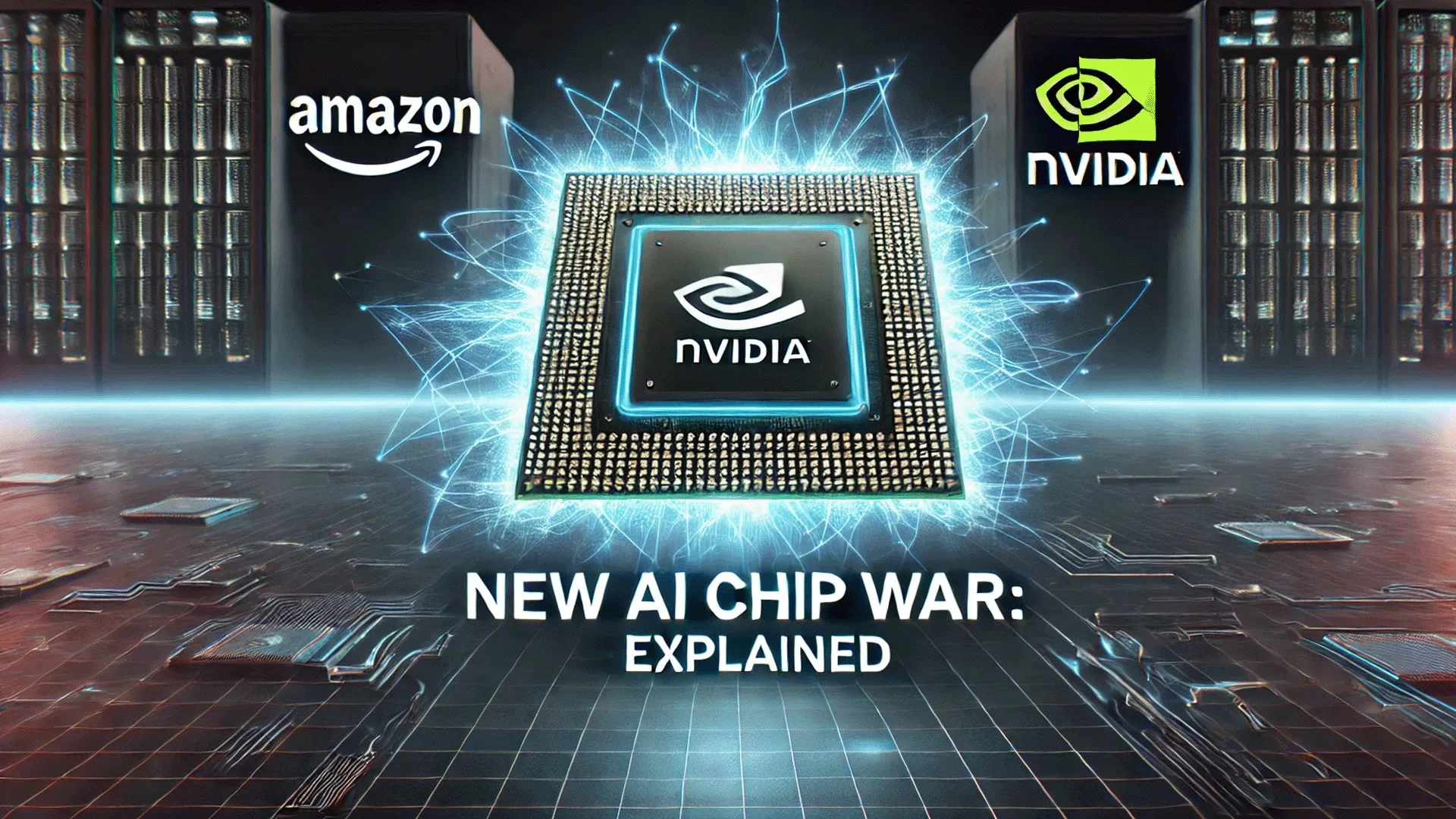Big Tech’s Annapurna Labs ramps up its custom chip production to reduce reliance on market leader Nvidia. In an era defined by rapid advances
Big Tech’s Annapurna Labs ramps up its custom chip production to reduce reliance on market leader Nvidia.
In an era defined by rapid advances in artificial intelligence (AI) and machine learning (ML), tech giants are vying for control over the foundational elements that power these technologies. One pivotal asset in this battle is semiconductor technology, and Amazon is positioning itself to make significant strides. With an ambitious plan to develop its own line of AI chips through Annapurna Labs, Amazon Web Services (AWS) aims to disrupt Nvidia’s near-monopoly in the AI processor market. This bold move signifies Amazon’s increasing focus on vertical integration and cost efficiency, setting the stage for an era of intensified competition among leading cloud providers.
Annapurna Labs: The Heart of Amazon’s Semiconductor Ambitions
Amazon’s journey into the world of custom chip design began with its acquisition of Annapurna Labs in 2015 for $350 million. Located in Israel and with key operations in Austin, Annapurna Labs has evolved into a cornerstone of AWS’s semiconductor strategy. Initially focused on creating a security chip known as Nitro, the team has expanded its efforts into more sophisticated AI-driven technologies. This commitment to internal chip development underscores Amazon’s goal: to craft specialized hardware capable of competing with Nvidia’s powerful graphics processing units (GPUs).
“We want to be absolutely the best place to run Nvidia,” said Dave Brown, AWS’s vice-president of compute and networking services. “But at the same time we think it’s healthy to have an alternative.”
This pursuit of alternatives is driven by more than just competitiveness; it’s a strategic play to diversify technology options, improve cost efficiency, and enhance AWS’s service offerings.
The Rise of Trainium and Inferentia: Amazon’s AI Arsenal
The culmination of Annapurna Labs’ hard work is embodied in Amazon’s proprietary AI chips, most notably Trainium and Inferentia. Trainium chips are designed to handle the demanding tasks involved in training AI models, while Inferentia is tailored for inference—applying trained models to process data and generate outputs. The latest development, Trainium 2, represents a significant leap forward, boasting a fourfold performance improvement over its predecessor, Trainium 1.
According to Patrick Moorhead, a chip consultant at Moor Insights & Strategy, these performance enhancements, though not directly benchmarked against Nvidia’s chips, are credible and substantial. “Benchmarks are good for that initial ‘hey, should I even consider this chip?’,” Moorhead said, but the true measure comes when these chips operate in large, multi-rack configurations typical in modern data centers.
Amazon’s Strategic Spending and Industry Context
AWS’s investment in AI chips forms part of Amazon’s larger capital expenditure, projected to hit approximately $75 billion in 2024. This represents a notable increase from the $48.4 billion spent in 2023 and is aimed largely at expanding the company’s technology infrastructure. This surge in spending is part of a broader trend among big cloud providers—Google and Microsoft included—each of which is fueling an AI arms race that shows no sign of slowing down.
CEO Andy Jassy has underscored this trajectory, hinting that even more significant outlays are expected in 2025. This spending spree highlights a critical industry shift: major cloud providers are striving for greater self-reliance and reduced dependency on external suppliers like Nvidia.
While Nvidia continues to lead the market with reported revenues of $26.3 billion from AI data center chip sales in just its second fiscal quarter of 2024, AWS is plotting a long-term strategy that may slowly erode Nvidia’s dominance.
The Competitive Landscape: Nvidia vs. Custom Chipmakers
The current landscape of AI infrastructure heavily favors Nvidia, whose GPUs are often considered the gold standard for AI workloads due to their robust parallel processing capabilities. Nvidia’s position in the market is akin to that of a luxury car manufacturer, producing powerful, versatile tools capable of serving a broad range of applications. In comparison, AWS, with its custom-designed chips, aims to offer more task-specific, cost-effective solutions that prioritize efficiency.
G Dan Hutcheson, an analyst at TechInsights, explained that “the big advantage to AWS is their chips can use less power, and their data centers can perhaps be a little more efficient,” which in turn reduces operational costs. This aspect becomes increasingly important as companies scale up their AI operations, where even small cost savings can multiply into substantial financial benefits.
Send emails, automate marketing, monetize content – in one place
Beyond Performance: The Strategic Benefits of Custom Chips
Performance, while crucial, isn’t the only factor driving Amazon’s chip strategy. As Daniel Newman from The Futurum Group noted, “It’s not [just] about the chip, it’s about the full system.” For AWS, building a proprietary ecosystem that extends from silicon wafers to server racks allows for unparalleled control over performance and cost structures. This strategy could yield advantages in efficiency, reliability, and seamless integration with AWS’s existing cloud offerings.
Amazon’s efforts resonate with a broader industry trend where major tech players are moving toward vertical integration in their semiconductor designs. From Apple’s M-series chips for MacBooks to Google’s Tensor chips for its Pixel smartphones, custom chip development is becoming an essential differentiator. These companies are seeking “lower production cost, higher margins, greater availability and more control,” according to Newman, and Amazon is no exception.
Challenges Ahead: Breaking Nvidia’s Hold
Despite Amazon’s significant investments and innovations, challenging Nvidia’s dominance is no small feat. Nvidia’s GPUs remain unmatched in terms of general versatility and widespread adoption, bolstered by years of software optimization and a strong developer ecosystem. AWS has not submitted its chips for independent performance benchmarks, a choice that raises questions about the competitive parity of Trainium and Inferentia compared to Nvidia’s high-end offerings.
However, Amazon’s strategy may not be solely about direct competition on raw performance metrics. The true value proposition could lie in offering customers an alternative that excels in specific use cases, is tightly integrated with AWS infrastructure, and is cost-effective for large-scale deployments.
A Lucrative Future for Custom AI Chips
If AWS and Annapurna Labs can continue to innovate and deliver reliable, high-performing chips, Amazon could carve out a significant portion of the AI hardware market. The potential financial impact of such a shift is immense, especially given the expected surge in AI workloads. For AWS customers, the availability of more cost-effective and efficient chips could translate into lower operational expenses and improved scalability.
Moreover, Amazon’s emphasis on fostering a multi-option marketplace for AI infrastructure aligns with customer sentiment. “People appreciate all of the innovation that Nvidia brought, but nobody is comfortable with Nvidia having 90 percent market share,” said Moorhead. This demand for diversity could catalyze more rapid adoption of alternative chips like Trainium and Inferentia.
Concluding Thoughts: The Road Ahead
Amazon’s foray into AI chip design through Annapurna Labs represents a significant chapter in the evolution of AI technology. While Nvidia’s current dominance remains undisputed, Amazon’s commitment to innovation and substantial investment signals a clear intent to challenge the status quo. With Trainium 2 already in testing phases by major organizations such as Anthropic, Databricks, and Deutsche Telekom, AWS is poised to make tangible impacts in the AI landscape.
By focusing on cost efficiency, performance specialization, and integration within AWS’s expansive ecosystem, Amazon’s chip strategy is not just about catching up to Nvidia but redefining the parameters of competition in the AI chip market. Whether this approach will tilt the scales in favor of more competition remains to be seen, but one thing is certain: the AI chip race is heating up, and Amazon is ready to compete.
Send emails, automate marketing, monetize content – in one place


